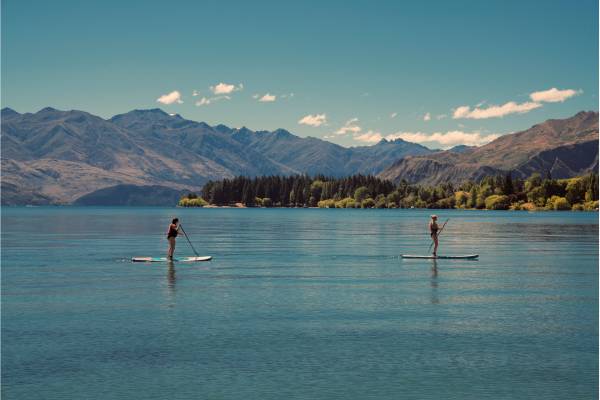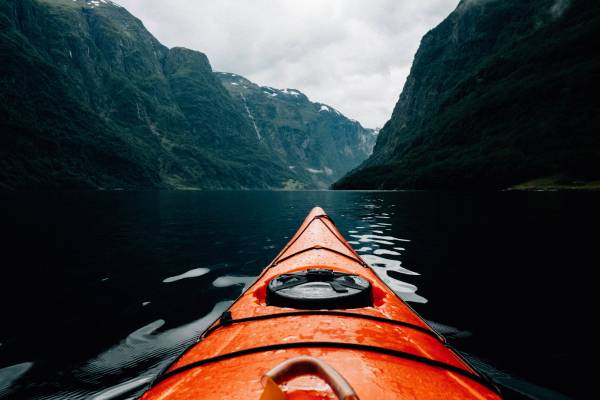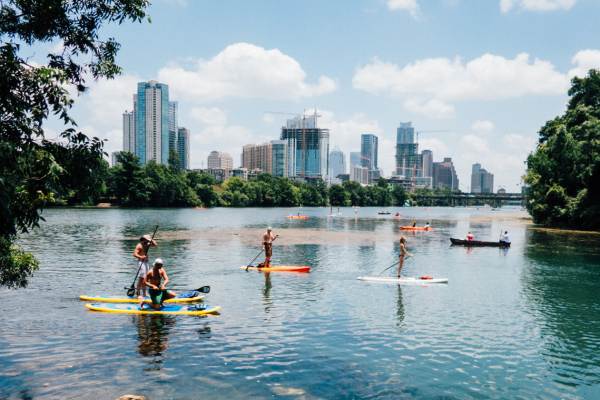Kayaking vs Stand up Paddle Boarding for core fitness
 Kayaking and Stand Up Paddle boarding are both great ways to enjoy the summer and now that summer is here it’s time to get out on the water! Are you bored of the repetition of the gym and need some fresh air? The lake in Canberra is becoming more user friendly. So, you are primed for your summer sport! Why not take advantage of the longer days and warmer weather? Everyone may not find swimming in Lake Burley Griffin appealing, yet there are other ways that you can increase your core fitness on the water.
Kayaking and Stand Up Paddle boarding are both great ways to enjoy the summer and now that summer is here it’s time to get out on the water! Are you bored of the repetition of the gym and need some fresh air? The lake in Canberra is becoming more user friendly. So, you are primed for your summer sport! Why not take advantage of the longer days and warmer weather? Everyone may not find swimming in Lake Burley Griffin appealing, yet there are other ways that you can increase your core fitness on the water.
What is Core Fitness
But first, what is core fitness and why is it so important? Essentially, the core of your body encompasses your torso to your hips. Predominately, the abdominals, the back and the hips. It stabilises your entire body during sports and active daily life. A more stable body increases balance, improves your posture and leads to more optimal functional movements. A strong core takes the load off your arms and legs as well as decreasing stresses on your lower back. The good news is, sit-ups and crunches are not the only way to build a strong core for the summer ahead!
Kayaking and Stand Up Paddle boarding (SUP) provide two ways for you to get out with nature and enjoy some core strengthening! But, what is the best fit for you and your body? I will detail some of the pros of both sports below. Our tremendous staff at Sport and Spinal Physiotherapy are well equipped to offer a thorough assessment. We also include some exercises to help you choose the right core fitness this summer.
Kayaking and Core Fitness
Many assume that the main muscle group worked when kayaking are those in the arms – incorrect! The core muscles should be the ones used to not only stabilise the rest of the body, but even to propel the kayak forward! While kayaking will significantly challenge your whole body, the majority of your strength needs to come from that core. Rotation and lateral flexion to both sides of the abdomen and obliques is a feature of the movement through an entire stroke of a paddle. The trunk is constantly rotating and counter-rotating to balance. This highlights the importance of spine stability and subsequent core strength.
It is impossible to kayak without targeting the core musculature. If you need extra core strengthening before getting on the water this summer, talk to Sport and Spinal Physiotherapy about enrolling in one of our many Pilates classes! Kayaking builds the core muscles to ensure a stable platform to work off. After a few kayaking sessions, you will begin to see an improvement in your balance too.
It is also important to consider lower limb muscles whilst kayaking. Being able to sit comfortably for a large period of time is crucial for you stay on the water for longer. Being able to use your hamstrings, gluts and hip flexor muscles to stabilise your core and to be seated in a good alignment is also a hallmark of an accomplished rower.
Stand Up Paddle Board and Core Fitness
Stand Up Paddle boarding is one of the fastest growing water sports worldwide. Training on unsteady surfaces, such as a SUP, forces the muscles in our mid-section (stomach, back, abdomen) to work harder to maintain our equilibrium. As you attempt to balance on the board, the muscles in your abdomen will tense to maintain a stable base to work off. As you begin to row from side to side, the muscles in your upper body contract. Your first few attempts at SUP is certainly a challenge. Once you have you feet positioned, are confident in your ability and toned your core muscles, you will be gliding along like a pro!
Balancing on your SUP places a high demand on your leg muscles. But this is countered by the nature of SUP – it is a low impact exercise but a high output on your core muscles. Thankfully, Canberra has the perfect weather and calm lake to make paddle boarding very desirable. Don’t be fooled though, even calm waters can put your strength, balance and endurance to the test!
The rigours placed on your shoulders when you are on a SUP are different to those when using a kayak. As you are standing and the paddle is longer on a SUP, your default position is rotated to the side of the board you are using. This places greater emphasis on the ribs, posture, obliques and shoulder rotators. Similar to the kayak, it comes back to having good core strength to power you through the water.
Comparing the two sports
So back to our original question – which is better, kayaking or stand up paddle boarding? In terms of core strengthening, both are excellent activities to build strength and endurance. Your cardiovascular fitness is also targeted, as a few sessions a week will have you looking trim for the beach! In a nutshell, kayaking is more reliant upon upper body (shoulders and neck) muscles. Whereby the use of a SUP is more localised to your lower limbs (Hips, knees and ankles).
Both Kayaking and Stand up Paddle Boarding involve the use of nearly every muscle in the body. Therefore, it is imperative that one stretches before getting onto that delicious water. With West Basin Waterfront opening soon, there are plenty of beautiful spots to stretch up on the shoreline! A warm-up program aiming to loosen up your large muscle groups is a good start. Dynamic stretching is a good guide to assist you. Examples of these include gluteals, hamstrings, hip flexors, thoracic spine, shoulder and pectorals.
Further useful tips
Sophie recently wrote an excellent article detailing some core exercises that may improve your strength on the ground before you head out on the water.
As always, it is a good to know your limitations, start slow and focus on your technique.
If you’re still not ready to commit to the investment in a kayak or SUP, it is now possible to rent a kayak or SUP on the shoreline of Lake Burley Griffin. Now you can try both for yourself! And, if you’ve been working really hard, you might even treat yourself to Canberra’s newest craze on the lake – GoBoat Canberra!
No wonder we were voted the 3rd best place to visit in 2018!
https://www.thoughtco.com/muscles-and-body-parts-used-inkayaking-2555984
http://jubileesports.physiotherapy.site.mobi/site/dealinginjuries/stand-up-for-fitness-is-paddle-boarding-a-goodworkout?smallView=1
http://www.popularfitness.com/articles/kayakingforcorefitness.html

